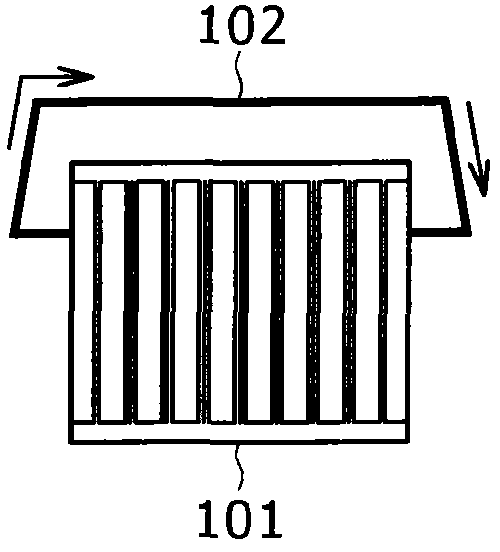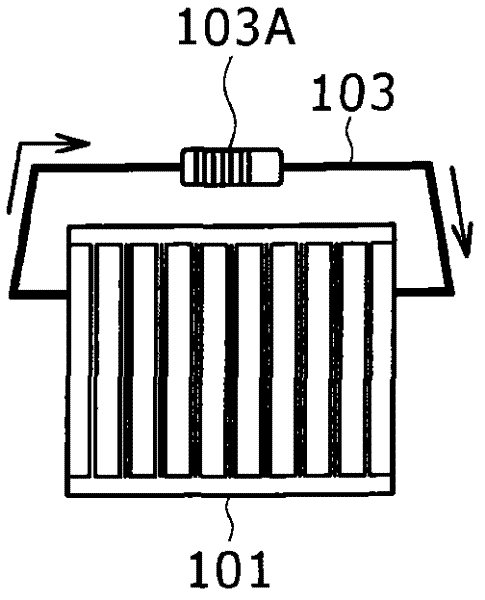Controller, controlling method, and solar cell
A solar cell and controller technology, applied in the field of solar cells, to achieve the effect of suppressing deterioration
- Summary
- Abstract
- Description
- Claims
- Application Information
AI Technical Summary
Problems solved by technology
Method used
Image
Examples
no. 1 example
[0048] (2) The first embodiment (deterioration suppression controller);
no. 2 example
[0049] (3) The second embodiment (deterioration suppression control method); and
[0050] (4) Third embodiment (solar cell with degradation suppression function).
[0051] 1. Deterioration due to polarization
[0052] First, a description will be given of an example of deterioration of the power generation characteristics of the dye-sensitized solar cell due to the polarization phenomenon. For the three patterns of the external circuit connected to the dye-sensitized solar cell module (three states between the power collecting parts), the dye-sensitized solar cell module including eight dye-sensitized solar panels connected in series is compared with each other The time of the power generation characteristics changes.
[0053] Such as Figure 1A The first state shown in is a state in which a released state (open state) is provided at both ends of the power collecting part of the dye-sensitized solar cell module 101. In this case, the resistance value between the power collecting par...
PUM
 Login to View More
Login to View More Abstract
Description
Claims
Application Information
 Login to View More
Login to View More - R&D
- Intellectual Property
- Life Sciences
- Materials
- Tech Scout
- Unparalleled Data Quality
- Higher Quality Content
- 60% Fewer Hallucinations
Browse by: Latest US Patents, China's latest patents, Technical Efficacy Thesaurus, Application Domain, Technology Topic, Popular Technical Reports.
© 2025 PatSnap. All rights reserved.Legal|Privacy policy|Modern Slavery Act Transparency Statement|Sitemap|About US| Contact US: help@patsnap.com



